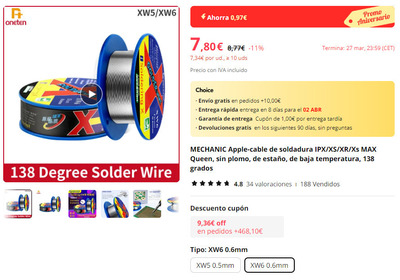Reply 80 of 98, by Deunan
jnemo2004 wrote on 2024-03-18, 12:19:What I'm thinking of doing is the following:
1.- Desolder all the surrounding components to work well.
Well, the bottom and right side pads look OK. No need to mess with those I think. The problem area is up and left, especially upper left corner.
You can unmask the traces with sandpaper or, if you have one, a fiberglass pen. The pen allows to work on small areas and with some experience can be very precise.
Check the connections and vias that you had mapped previously, that didn't go anywhere. In case you have a broken vias that look OK form outside. You can reconstruct the missing traces with thin copper wire but I would avoid drilling. Just try to solder both ends and maybe, after you confirm the connection and spacing is good, put some glue on the ends.
To resolder the chip it might be best to remove the excess solder from the pads with some solder wick - but be careful, to much temperature and the solder pad will unglue itself, to little and the solder wick will stick to pad and rip it off when you try to move it. Use plenty of flux for such job (and just clean it later) and always move the copper braid along the traces/pads, not from the side. Soldering iron with good temperature control is the best tool for this.





